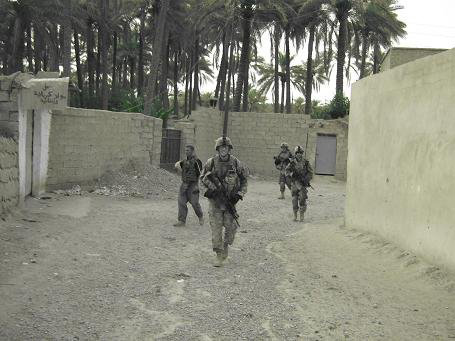Coming Home: PTSD and Traumatic Brain Injury
Sometimes veterans do seek treatment, but are denied. Tanner cites the example of Cody Young, a U.S. Army National Guard veteran of Afghanistan who was killed by a Tulsa police officer on May 20 after he fired a rifle during a standoff. She says it’s believed that Young was having a flashback, a psychological effect of PTSD. Young’s family claims that he sought help for his condition at local hospitals, as well as a VA hospital, but was denied treatment for an unknown reason.

Photo courtesy Russell Whitehead.
“This is happening all over our nation to our returning troops,” Tanner states. “We can’t let another Cody lose his or her life because of the sacrifices they made to serve our country.”“In a normal recovery, the disruptive thoughts and emotions decrease over time, and a natural healing occurs. However, in those who don’t recover, they confront strong negative and intrusive thoughts and emotions.
Among myriad mental health issues plaguing veterans, PTSD from the stress of combat, injury and extreme violence frequently factors into the picture.
“PTSD is a failure to recover,” says Tanner. “In a normal recovery, the disruptive thoughts and emotions decrease over time, and a natural healing occurs. However, in those who don’t recover, they confront strong negative and intrusive thoughts and emotions. Those individuals with PTSD try to escape or avoid reminders of negative trauma-related emotions and thoughts.”
Common reactions after a trauma may include depression, sleep disturbance, nightmares, drug or alcohol abuse, hyper-vigilance, risky behaviors, social withdrawl and aggression, adds Tanner.
“The long-term effects or results are often a lack of intimacy and family stress, often resulting in divorce; difficulty maintaining employment; drinking and driving, resulting in frequent arrests; and an extremely difficult time reintegrating back into civilian life,” Tanner says. “These symptoms, if left untreated, can often lead the veteran to a feeling of complete hopelessness and can result in suicide.”
Tanner has worked closely with the VA Hospital in Muskogee and praises their efforts to treat veterans’ mental health issues. But in the end, she says, it’s too much for one organization to face alone.
“It is important for the communities in Oklahoma to step up and fill the gap,” she says. “Our agency had trained over 120 mental health providers with an evidence-based therapy to treat those suffering from PTSD and other behavioral health issues. The problem now is reaching those returning service members to let them know that help is available. Our 2-1-1 system is an excellent source of referral for any veterans in need of services and who haven’t been able to access the VA.”
Lyall says that other alternatives exist.
“With support from Wounded Warrior Project, the Tulsa Area United Way and other sources, the Community Service Council has helped community-based organizations to work alongside the VA to serve local veterans. We believe Oklahoma veterans return to families and communities, not military bases, so supporting them is a community undertaking, not solely the job of the VA,” he says.
The CSC also provides soldiers with resources to heal from moral injury, which “results when one’s faith or personal values are compromised by participating in or supporting combat action,” says Lyall.
Moral injury can occur with PTSD. Although it is not a psychiatric condition, veterans can experience lifelong guilt if it is not addressed, he says.
“Over time, it is important for veterans to talk about their military experiences,” Lyall adds. “It is equally important for the rest of us to listen without judgment. Saying, ‘I’d like to hear about your military experience,’ can be helpful if you’re prepared to be a good, nonjudgmental listener. We can also encourage and foster communication with the VA, community-based agencies and clergy when a veteran begins to struggle.”
Among the numerous initiatives sponsored by the CSC is training for cognitive processing therapy to help local health providers treat conditions like PSTD. The CSC also offers military culture training to these providers and hosts a conference addressing the “Silent Wounds of War.”[pullquote]“In a normal recovery, the disruptive thoughts and emotions decrease over time, and a natural healing occurs. However, in those who don’t recover, they confront strong negative and intrusive thoughts and emotions.” [/pullquote]
“The CSC has routinely brought veterans, family members, the VA, law enforcement, educators, employment specialists and others together with the goal of strengthening our community’s response to veterans,” Lyall says.
As prevalent as PTSD, although somewhat less known, are instances of TBI, often caused by improvised explosive device detonation. In May, the Oklahoma legislature passed a law that will provide hyperbaric oxygenation treatments to veterans with TBI at no cost. It is believed that these treatments help the brain heal from its trauma and restore its normal functioning levels.
“There have been cases where this has proved beneficial to people with traumatic brain injuries and PTSD,” says Shane Faulkner, public information officer for the Oklahoma Department of Veterans Affairs. “Suffering a TBI can change the entire world for someone. Unfortunately, this is a major contributor to the spike in suicide among veterans.”























